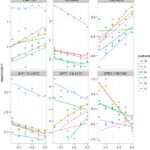
Bioinformatics – Tools, softwares & Programmes
June 24, 2019Bioinformatic tools are software programs that are designed for extracting the meaningful information from the mass of molecular biology / biological databases & to carry out sequence or structural analysis
Factors that must be taken into consideration when designing bioinformatics tools, software and programmes are:
The end user (the biologist) may not be a frequent user of computer technology
These software tools must be made available over the internet given the global distribution of the scientific research community

bioinformaticstools
Major categories of Bioinformatics Tools :
There are both standard and customized products to meet the requirements of particular projects. There are data-mining software that retrieve data from genomic sequence databases and also visualization tools to analyze and retrieve information from proteomic databases. These can be classified as homology and similarity tools, protein functional analysis tools, sequence analysis tools and miscellaneous tools.
Here is a brief description of a few of these, everyday bioinformatics is done with sequence search programs like BLAST, sequence analysis programs, like the EMBOSS and Staden packages, structure prediction programs like THREADER or PHD or molecular imaging/modelling programs like RasMol and WHATIF.
Homology and Similarity Tools:
Homologous sequences are sequences that are related by divergence from a common ancestor. Thus the degree of similarity between two sequences can be measured while their homology is a case of being either true of false. This set of tools can be used to identify similarities between novel query sequences of unknown structure and function and database sequences whose structure and function have been elucidated.
Protein Function Analysis:
This group of programs allow you to compare your protein sequence to the secondary (or derived) protein databases that contain information on motifs, signatures and protein domains. Highly significant hits against these different pattern databases allow you to approximate the biochemical function of your query protein.
Structural Analysis:
This set of tools allow you to compare structures with the known structure databases. The function of a protein is more directly a consequence of its structure rather than its sequence with structural homologs tending to share functions. The determination of a protein’s 2D/3D structure is crucial in the study of its function.
Sequence Analysis:
This set of tools allows you to carry out further, more detailed analysis on your query sequence including evolutionary analysis, identification of mutations, hydropathy regions, CpG islands and compositional biases. The identification of these and other biological properties are all clues that aid the search to elucidate the specific function of your sequence.
Some examples of Bioinformatics Tools:
BLAST:
BLAST ( Basic Local Alignment Search Tool) comes under the category of homology and similarity tools. It is a set of search programs designed for the Windows platform and is used to
perform fast similarity searches regardless of whether the query is for protein or DNA. Comparison of nucleotide sequences in a database can be performed. Also a protein database can be searched to find a match against the queried protein sequence. NCBI has also introduced the new queuing system to BLAST (Q BLAST) that allows users to retrieve results at their convenience and format their results multiple times with different formatting options.
Depending on the type of sequences to compare, there are different programs:
blastp compares an amino acid query sequence against a protein sequence database
blastn compares a nucleotide query sequence against a nucleotide sequence database
blastx compares a nucleotide query sequence translated in all reading frames against a protein sequence database
tblastn compares a protein query sequence against a nucleotide sequence database dynamically translated in all reading frames
tblastx compares the six-frame translations of a nucleotide query sequence against the six-frame translations of a nucleotide sequence database.
FASTA:
FAST homology search A ll sequences .An alignment program for protein sequences created by Pearsin and Lipman in 1988. The program is one of the many heuristic algorithms proposed to speed up sequence comparison. The basic idea is to add a fast prescreen step to locate the highly matching segments between two sequences, and then extend these matching segments to local alignments using more rigorous algorithms such as Smith-Waterman.
EMBOSS:
EMBOSS (European Molecular Biology Open Software Suite) is a software-analysis package. It can work with data in a range of formats and also retrieve sequence data transparently from the Web. Extensive libraries are also provided with this package, allowing other scientists to release their software as open source. It provides a set of sequence-analysis programs, and also supports all UNIX platforms.
Clustalw:
It is a fully automated sequence alignment tool for DNA and protein sequences. It returns the best match over a total length of input sequences, be it a protein or a nucleic acid.
RasMol:
It is a powerful research tool to display the structure of DNA, proteins, and smaller molecules. Protein Explorer, a derivative of RasMol, is an easier to use program.
PROSPECT:
PROSPECT (PROtein Structure Prediction and Evaluation Computer ToolKit) is a protein-structure prediction system that employs a computational technique called protein threading to construct a protein’s 3-D model.
PatternHunter :
PatternHunter, based on Java, can identify all approximate repeats in a complete genome in a short time using little memory on a desktop computer. Its features are its advanced patented algorithm and data structures, and the java language used to create it. The Java language version of PatternHunter is just 40 KB, only 1% the size of Blast, while offering a large portion of its functionality.
COPIA :
COPIA (COnsensus Pattern Identification and Analysis) is a protein structure analysis tool for discovering motifs (conserved regions) in a family of protein sequences. Such motifs can be then used to determine membership to the family for new protein sequences, predict secondary and tertiary structure and function of proteins and study evolution history of the sequences.
Application of Programmes in Bioinformatics:
JAVA in Bioinformatics:
Since research centers are scattered all around the globe ranging from private to academic settings, and a range of hardware and OSs are being used, Java is emerging as a key player in bioinformatics. Physiome Sciences’ computer-based biological simulation technologies and Bioinformatics Solutions’ PatternHunter are two examples of the growing adoption of Java in bioinformatics.
Perl in Bioinformatics:
String manipulation, regular expression matching, file parsing, data format interconversion etc are the common text-processing tasks performed in bioinformatics. Perl excels in such tasks and is being used by many developers. Yet, there are no standard modules designed in Perl specifically for the field of bioinformatics. However, developers have designed several of their own individual modules for the purpose, which have become quite popular and are coordinated by the BioPerl project.
BioJava:
The BioJava Project is dedicated to providing Java tools for processing biological data which includes objects for manipulating sequences, dynamic programming, file parsers, simple statistical routines, etc.
BioPerl:
The BioPerl project is an international association of developers of Perl tools for bioinformatics and provides an online resource for modules, scripts and web links for developers of Perl-based software.
BioXML:
A part of the BioPerl project, this is a resource to gather XML documentation, DTDs and XML aware tools for biology in one location.
Biocorba:
Interface objects have facilitated interoperability between bioperl and other perl packages such as Ensembl and the Annotation Workbench. However, interoperability between bioperl and packages written in other languages requires additional support software. CORBA is one such framework for interlanguage support, and the biocorba project is currently implementing a CORBA interface for bioperl. With biocorba, objects written within bioperl will be able to communicate with objects written in biopython and biojava (see the next subsection). For more information, see the biocorba project website at http://biocorba.org/ . The Bioperl BioCORBA server and client bindings are available in the bioperl-corba-server and bioperl-corba-client bioperl CVS repositories respecitively. (see http://cvs.bioperl.org/ for more information).
Ensembl :
Ensembl is an ambitious automated-genome-annotation project at EBI. Much of Ensembl\’s code is based on bioperl, and Ensembl developers, in turn, have contributed significant pieces of code to bioperl. In particular, the bioperl code for automated sequence annotation has been largely contributed by Ensembl developers. Describing Ensembl and its capabilities is far beyond the scope of this tutorial The interested reader is referred to the Ensembl website at http://www.ensembl.org/.
bioperl-db:
Bioperl-db is a relatively new project intended to transfer some of Ensembl’s capability of integrating bioperl syntax with a standalone Mysql database ( http://www.mysql.com ) to the bioperl code-base. More details on bioperl-db can be found in the bioperl-db CVS directory at http://cvs.bioperl.org/cgi-bin/viewcvs/viewcvs.cgi/bioperl-db/?cvsroot=bioperl . It is worth mentioning that most of the bioperl objects mentioned above map directly to tables in the bioperl-db schema. Therefore object data such as sequences, their features, and annotations can be easily loaded into the databases, as in $loader->store($newid,$seqobj) Similarly one can query the database in a variety of ways and retrieve arrays of Seq objects. See biodatabases.pod, Bio::DB::SQL::SeqAdaptor, Bio::DB::SQL::QueryConstraint, and Bio::DB::SQL::BioQuery for examples.
Biopython and biojava:
Biopython and biojava are open source projects with very similar goals to bioperl. However their code is implemented in python and java, respectively. With the development of interface objects and biocorba, it is possible to write java or python objects which can be accessed by a bioperl script, or to call bioperl objects from java or python code. Since biopython and biojava are more recent projects than bioperl, most effort to date has been to port bioperl functionality to biopython and biojava rather than the other way around. However, in the future, some bioinformatics tasks may prove to be more effectively implemented in java or python in which case being able to call them from within bioperl will become more important. For more information, go to the biojava http://biojava.org/ and biopython http://biopython.org/ websites.


















